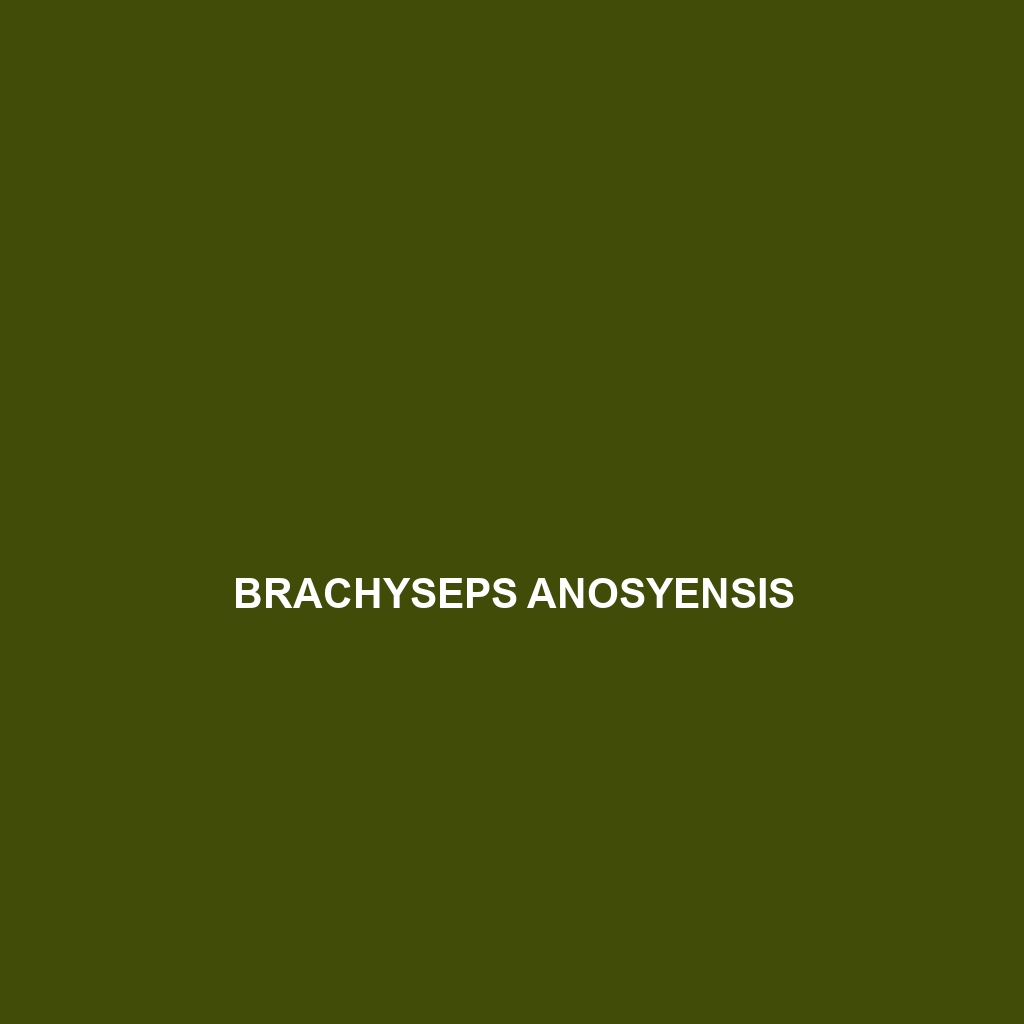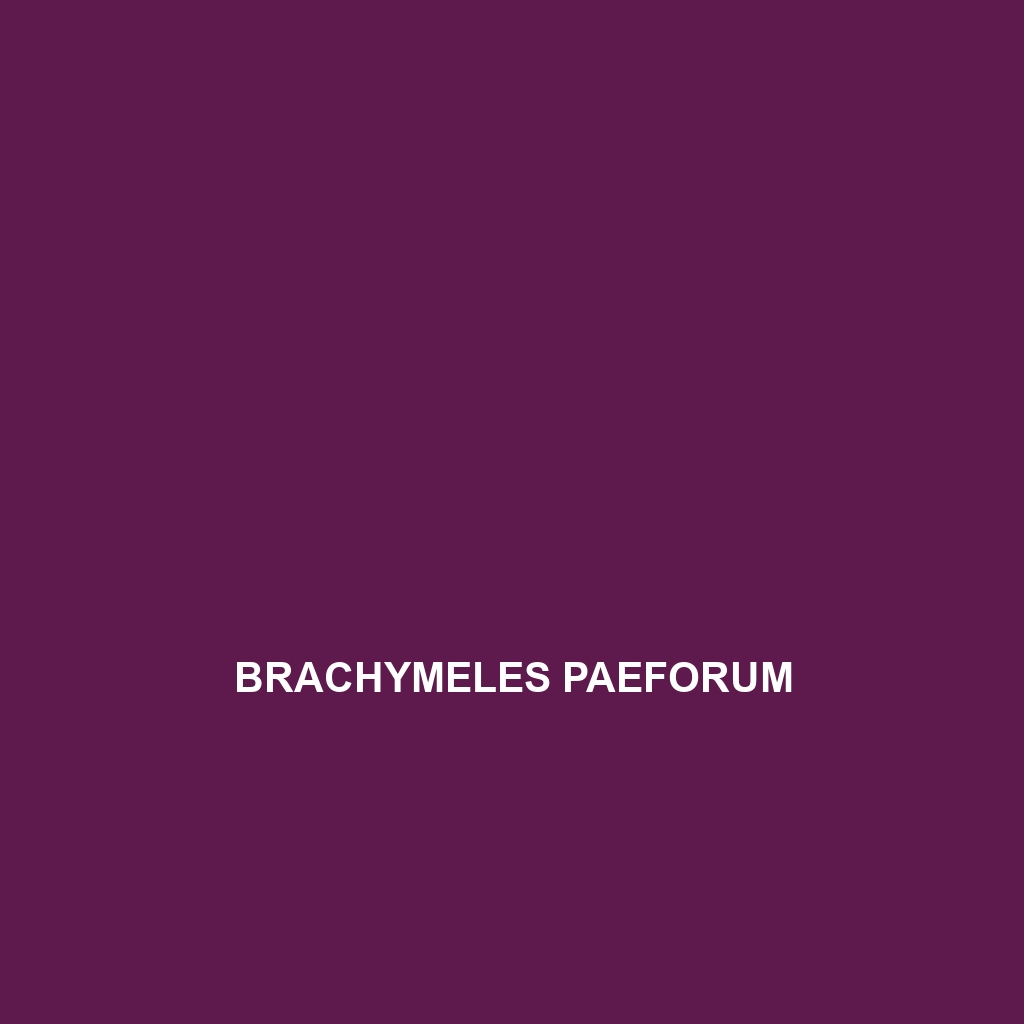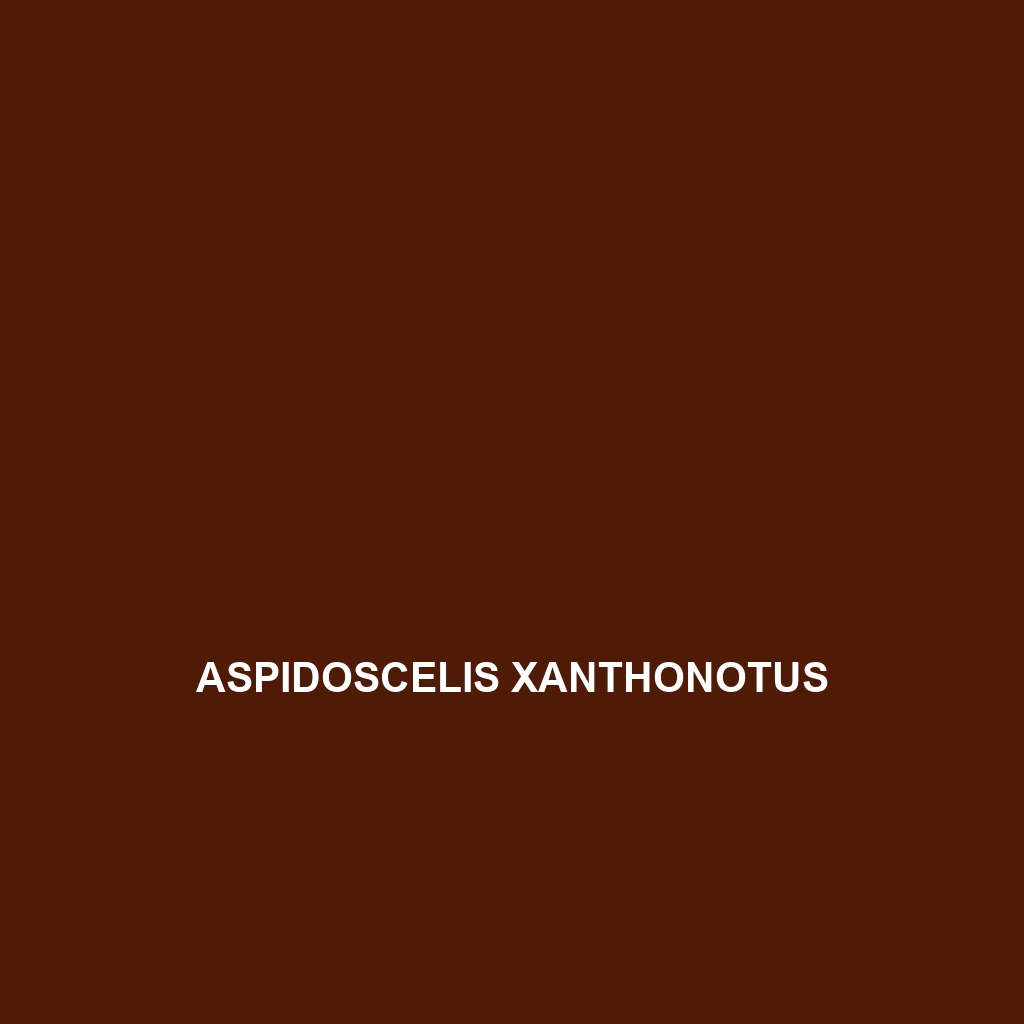-

Bronchocela burmana
Discover the Bronchocela burmana, also known as the burman lizard, a vibrant, insectivorous species native to Southeast Asia’s tropical forests. With its striking green and brown coloration and agile climbing abilities, this unique lizard plays a vital role in maintaining ecological balance while showcasing fascinating behaviors, such as territorial displays during mating season.
-

Brachyseps anosyensis
Discover the unique Brachyseps anosyensis, a small to medium-sized lizard native to the rainforests of Madagascar, distinguished by its slender body, vibrant coloration, and agile behavior. This fascinating species plays a vital role in its ecosystem by preying on insects, while also being classified as ‘Vulnerable’ due to habitat loss.
-

Brachymeles wrighti
Discover the fascinating Brachymeles wrighti, a medium-sized, nocturnal lizard native to the lush rainforests of the Philippines, known for its unique snake-like appearance, fossorial lifestyle, and role in controlling insect populations. This species exhibits remarkable adaptations, including autotomy for defense, and is currently classified as ‘Vulnerable’ due to habitat loss.
-

Brachymeles tridactylus
Discover the Brachymeles tridactylus, or three-toed skink, a slender lizard endemic to the Philippines, characterized by its reduced limbs, vibrant coloring, and fossorial behavior. This vulnerable species plays a vital role in its ecosystem by controlling insect populations and aiding soil aeration.
-

Brachymeles orientalis
Discover the Brachymeles orientalis, a fascinating nocturnal lizard native to the tropical rainforests of the Philippines, featuring a snake-like appearance with reduced limbs, and a vital role in its ecosystem as a predator of invertebrates. This vulnerable species thrives in humid habitats, making significant contributions to soil health through its burrowing behavior.
-

Brachymeles gracilis
Discover the Brachymeles gracilis, or “smooth skink,” a slender, nocturnal lizard native to the tropical rainforests of the Philippines. Thriving in humid environments, this fascinating species plays a vital role in its ecosystem by controlling insect populations and serves as an essential food source for larger predators.
-

Aspidoscelis xanthonotus
Discover the Aspidoscelis xanthonotus, also known as the yellow-nosed whiptail, an agile and vibrant lizard native to the arid regions of the southwestern United States and northern Mexico. With distinctive yellow stripes, this diurnal insectivore plays a key role in its ecosystem, controlling pest populations and maintaining biodiversity.
-

Australolacerta australis
Discover the Australolacerta australis, or southern lacertid, a slender lizard native to southern Europe, thriving in warm, temperate habitats like dry grasslands and rocky areas. This agile diurnal species is known for its remarkable camouflage, vibrant courtship displays, and plays a crucial role in controlling insect populations in its ecosystem.
-

Aspidoscelis danheimae
Introducing the Aspidoscelis danheimae, or Danheim’s whiptail, a striking lizard found in the arid regions of the southwestern United States and northern Mexico. Known for its agile movements, it features a length of 15 to 20 inches and displays light brown to olive green coloration with distinctive stripes, playing a vital role in controlling insect…
Search
Popular Posts
-
Lygosoma corpulentum
Discover the Lygosoma corpulentum, or fat skink, a robust insectivorous lizard native to Southeast Asia’s moist tropical rainforests and varying habitats. With a stocky body, impressive camouflage, and remarkable adaptability, this ovoviviparous species plays a crucial role in maintaining ecological balance.
-
Lygosoma boehmei
Lygosoma boehmei is a slender, nocturnal insectivore found in humid tropical rainforests and savannas of Southeast Asia, exhibiting a smooth, camouflaging texture and remarkable burrowing abilities. This vulnerable species plays a crucial role in its ecosystem by controlling insect populations and serving as prey for larger predators.
-
Lygosoma bampfyldei
Lygosoma bampfyldei, commonly found in tropical and subtropical regions, is a moderately sized lizard measuring 15 to 25 cm, known for its elongated body and glossy, camouflage coloration. This insectivorous species thrives in moist habitats and plays a vital role in maintaining ecological balance by controlling insect populations.
Categories
Tags
animal adaptations (924) animal behavior (5000) animal reproduction (865) behavior (920) biodiversity (7853) conservation (1670) conservation efforts (1778) conservation status (5748) diet (2104) ecological balance (2087) ecological role (1952) ecosystem (1469) ecosystem role (2901) endangered species (2514) habitat (3280) habitat conservation (1136) Habitat Destruction (1421) habitat loss (3385) herpetology (870) insectivorous reptiles (948) IUCN Red List (1971) lizard behavior (881) lizard diet (944) lizard reproduction (1101) nocturnal animals (2754) nocturnal behavior (2592) nocturnal reptiles (1061) physical characteristics (2058) predator-prey relationships (927) reproduction (2890) reptile behavior (1037) reptile conservation (1348) reptile reproduction (1069) rodent species (1325) seed dispersal (2145) Seed Disperser (979) small mammals (1168) snake behavior (952) snake diet (1061) snake reproduction (1129) tropical forests (948) Vulnerable Species (4926) wildlife (2511) wildlife conservation (5355) wildlife protection (1008)


